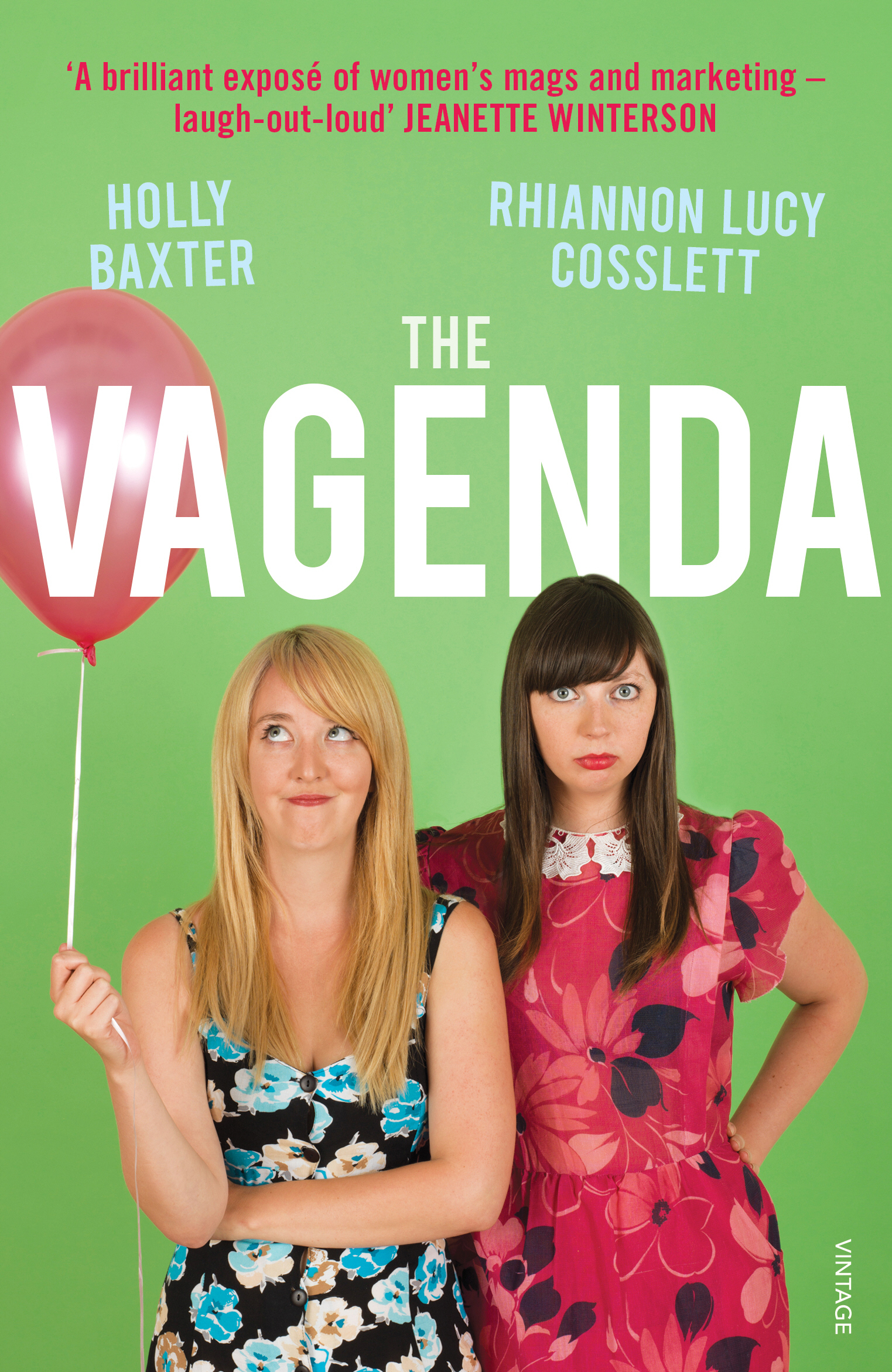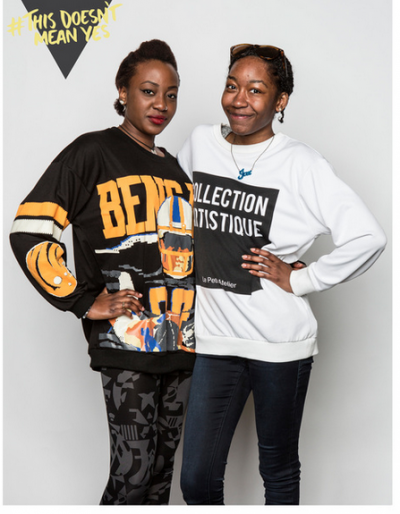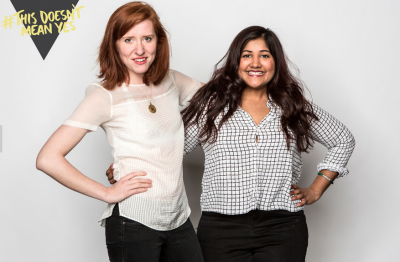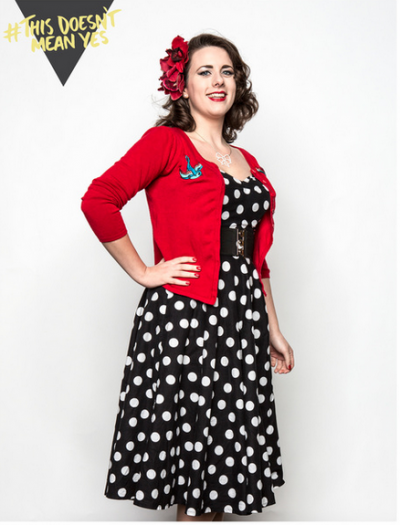You’d think that by the 21st century we’d have grasped the concept of sexual consent. After all, this is the age of the internet, the era of the cronut, the decade that conceived the fourth wave of Feminism, Tinder and the iPhone 6. So you’d think that we’d have got our heads around the idea that no means no and yes means yes. You’d think.
Sadly there are still complications and, apparently, confusion when it comes to consent. Statistics show that rape and sexual assault are endemic in the UK with an estimated 85,000 women raped and 400,000 women sexually assaulted every year. Recently an article by Emmeline May, who utilised a simple, yet effective cup of tea metaphor to demystify consent, went viral. Quite literally creating a storm in a teacup, there was a huge outcry in response to May’s piece:‘The best we’ve heard in a long time’ – Cosmopolitan. ‘This should be required reading’ – Bust Magazine … and so on. A brilliant analogy with a comic twist, it’s a good thing when a piece like this makes so much noise, right?
Well yes, but it’s actually quite depressing because it gives rise to our miserable reality: this conversation still needs to be had. There is still some confusion around what constitutes as sexual consent and how it is given. The debate is ongoing. Even now, some people are still not clear.
This month the #ThisDoesntMeanYes team launched its campaign in a further bid to set the boundaries, clarify any grey areas and rule out blurred lines. Setting up a pop-up studio in conjunction with Rape Crisis and world-renowned photographer, Perou, we shot over 2000 photographs and pictured over 200 women at an open casting call in London. We set out to capture women in a moment that was their own and to shed light on their individuality. We wanted to give them an opportunity to celebrate their self-expression – the fact that the choices they make in their clothing are for them and that however a woman is dressed she is never ‘asking for it’.
At first, our mission was to start a debate around consent and to challenge this insidious fable. Because you see what I wear and how I behave has nothing to do with your cock. My flirtatious disposition and sexual appetite is nothing to do with you. It is certainly not an invitation and I am not ‘gagging for it’. How ironic that women are put up on a pedestal, expected to perform the physical, stylistic expressions of femininity that society demands of them, a performance that is created by the male gaze, only to be punished for it.
So when we first set out with the campaign we wanted to start a meaningful discussion about consent, but now, after hearing from so many women, our goal has changed and we want to end it. So that it’s no longer ‘required reading’ and we’re not excited when we stumble across ‘the best’ analogy about consent ‘we’ve heard in a long time’. You might find is surprising that a recent Amnesty International survey found that one in three people believe that women who behave flirtatiously are at least partially responsible for their rape. And you might also be shocked to hear that more than a quarter of people think women are, in part, responsible for their rape if they wear revealing clothing.
There is no mystery around consent, no common misconception, no loop hole. A red lipstick is not a yes. A little dress cannot, in a sudden and unprovoked move, come to life and whisper sweet I-want-you-to-fuck-me nothings into a man’s ear.
The campaign sets out to empower women and give the control back to them and now its embarking on a life of its own with women taking photos of themselves feeling empowered alongside #ThisDoesntMeanYes. We want to strip away the shame that other anti-rape campaigns depict and challenge the notion that a woman plays a part in her rape because of what she’s wearing. Because it’s not your fault and you have every right to express who you are and be who you want to be.
Every woman has the right to freedom of expression and no woman deserves to be raped for it.
-TDMY Team





Here’s how you do consent.
You don’t ask someone’s clothes, their lipstick, or their beer if they want to have sex with you.
You ask the person – the one who can speak – if they want to have sex with you. They respond with Yes or No. If they say yes, you get to have sex. If they say no, you don’t get to have sex.
If you’re not able to come out and ask someone, “Do you want to have sex with me?” then you don’t get to have sex.
I think we need to abandon what is essentially a legal fiction. The whole notion of “consent” is a term created by lawmakers, an argument that is most often used against women rather than against the perpetrating men who harm us.
I would like to see us teach listening, or respecting autonomy or a woman’s/girl’s boundaries instead of “consent”. It is telling that we are still putting the burden of action on the female, and making the male passive. The woman must “consent”, while the male must passively accept. Why we aren’t actively teaching boys to listen, respect, and honor boundaries is a symptom of the bigger issue – that women aren’t allowed to have them. “Consent” is wallpaper over a gaping hole in the drywall.
This campaign feels unbelievably pathetic and lame. Yeah, great, let’s have women pose for pictures and show their supposed individuality. That would be a huge change from… the pictures of women posing that are plastered over every public surface in our society. Yeah, yeah, let’s tell everyone all over again that clothes don’t equate to consent – that would be a huge change from… all the telling everyone that clothes don’t equal consent that’s been going on my whole life.
I am so sick of this lame, pretty, cutsey, non-confrontational, like-me ‘feminism’ that is getting us nowhere and has about as much serious analysis of reality as an ad for breakfast cereal.
Men who have sex with women who aren’t consenting know that the woman isn’t consenting. They know that she wasn’t ‘asking for it’. They know her dress wasn’t asking for it. They’re raping someone. They know they are. This campaign suggests otherwise. It suggests that men still haven’t grasped the basics – and it contributes to rape culture by continuing to act as if men just need a bit of education. They don’t. They know when they are rapists. Put the focus on those guys. Make it look laughably irrelevant even to discuss women’s clothing by forcing conversations that *don’t* feature the issue. Discuss how rapists are supported by a discourse that gives them a get out of jail card (literally); by the patriarchal structures of our society; by women who imagine that if they cosy up to the patriarchy by victim-blaming other women, they won’t be victims themselves. We need to start talking about systems of oppression and their mechanisms, and stop faffing around with this sort of tedious nonsense that pretends to be ‘empowering’ and is just giving rapists even more cover.
Awesome.
thank you so much for this comment… I am feeling very much the same at the moment. Getting bored of sugar-coated feminism run by pretty people … I get the campaign but let’s be honest, it’s more pretty women being pretty with a caption… so it’ll change, erm, what? :p
I don’t know though. For a lot of women and men DO believe these victim blaming ideas.
Doing think pieces on male entitlement is accurate, and cathartic, but without this “fluffy” shallow campaigning, you won’t have half the people reading it. It will just isolate and polarise the issue.
People have to gently be made aware there’s a problem (and they are not; it’s much more comfortable to blame women’s clothing than male rapists), before we can reach the deeper analysis.
Though you’re right that visually, the campaign is lacking. Possibly because it’s shyed away entirely from having a perpetrator depicted, which is disingenuous and misleading. Only serving to hide the problem and glamorise it, which is admittedly problematic.
I disagree completely. The only reason that women’s clothing has such prominence is because the rapist is allowed (by feminists too) to disappear. He is hidden behind the skirts of the women he assaults. Anyone who still thinks that a woman can ask to be raped (a logical impossibility, since if we were ‘asking for it’, we would be consenting) is not ill-informed, but actively malevolent towards (other) women. They have chosen not to hear messages to teach them better. We can’t counter this with pretty campaigns. We need to drag the rapist out into the light of day and say: this is what a rapist is: he looks exactly like every other man you know; he is just as pleasant and/or unpleasant as they are; he has a job, goes jogging, likes coffee, whatever; and he rapes women for kicks. We say that there is no such thing as the ‘grey area’, that a man knows whether a woman is consenting, and if he is in any doubt whatsoever at any point in the proceedings, and he continues, then he is choosing to rape her. If he claims that he really can’t tell, then he needs to go on a remedial course and certainly he must not have sex until he sorts himself out. If he says consent is confusing and difficult, he could be chemically castrated or tagged – that is the kind of measure we’d take with a man who said that he was very confused over what constituted a violent assault on another man. He’d be treated with drugs to sort out his mental state and/or locked up. We certainly wouldn’t shrug and say ‘yes, that is a bit confusing: here are a whole lot of pictures of men who are posing in outfits that aren’t an invitation for you to hit them: I hope that sorts things out in your mind’. God, if only this kind of fluffy ‘feminist’ spent a bit more time trying to imagine men embarrassing themselves with cutsey campaigns, and a bit less finding reasons to put pictures of herself online!
We need to make rape a male problem and a problem of a society organised to suppress women and protect men from the consequences of suppressing women. We need to be aggressively asking why, if women are always in potential danger and this danger increases in some situations such that the women are advised to avoid these situations – why aren’t *men* being removed from them? Why are all women told to avoid certain places and situations, rather than curfews being imposed on men or male-free zones implemented? We have got to stop having this discussion on the terms that the patriarchy wants us to have it. The idea that women’s job is to constantly monitor and restrict herself to avoid being raped, and men, who are the rapists, are not restricted in the slightest, is crazy. The fact that it sounds crazy to suggest a curfew on *men* when women are effectively subjected to one or blamed for their own rapes shows just how thoroughly patriarchal forces own this debate.
Well said!
Under no circumstance are rape/unconsented advances acceptable.
However I think this campaign needs a reality check. Until the media stop drumming hyper-sexualised images of women into our cultural/social norms (which often are represented as a sexual invitation) what we wear WILL be seen as an invitation because this has become embedded in our hegemonic values.
Although I should be able to wear whatever I like without the risk of being sexually assaulted, I cannot ignore the reality of how it will be perceived – be it wrong – and thus I make efforts the dress more modestly and avoid unwanted attention.
Change will happen when the media stop promoting and profiting off the objectification of women.